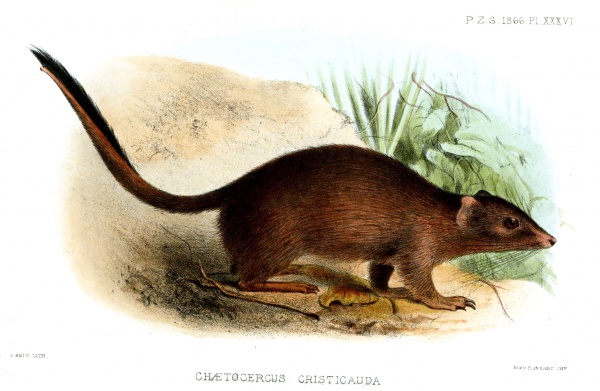Facts About Crest-tailed mulgara
The crest-tailed mulgara is a fascinating carnivorous marsupial native to Australia, specifically adapted to thrive in the country's arid regions. Belonging to the Dasyuridae family, this small to medium-sized mammal is renowned for its predatory behavior. It exhibits sexual dimorphism, meaning that males and females differ in size; males typically weigh between 100 and 185 grams, while females are lighter, weighing between 65 and 120 grams. Their fur is sandy-colored on top, with darker grey shades on their underparts and inner limbs.
A common point of confusion is distinguishing the crest-tailed mulgara from its close relative, the brush-tailed mulgara. The primary differences lie in their tail shapes and the number of nipples they possess.
Scientifically, the genus Dasycercus, to which the crest-tailed mulgara belongs, has undergone significant reclassification over the years. The species was divided into two distinct forms: Dasycercus cristicauda and D. blythi. This reclassification has complicated efforts to map their exact distribution, but they are generally found in South Australia, Queensland, and Western Australia.
Crest-tailed mulgaras prefer sandy habitats, such as sand ridges and slopes, or areas near salt lakes. They spend their days in burrows and emerge at night to hunt. Their diet is quite varied, including insects, spiders, rodents, reptiles, and even small marsupials. The breeding season runs from winter to early summer, with females able to give birth to up to eight young in a single litter.
For a time, the crest-tailed mulgara was believed to be extinct in New South Wales, but they made a comeback with a rediscovery in 2017.
In terms of conservation, the crest-tailed mulgara is listed as Vulnerable under Australia's Environment Protection and Biodiversity Conservation (EPBC) Act and Near Threatened on the IUCN Red List. They face several threats, including predation by foxes and feral cats, changes in fire patterns, environmental degradation, and habitat loss due to grazing and invasive species. Interestingly, the introduction of the rabbit hemorrhagic disease virus (RHDV) had an unexpected benefit for the mulgara, leading to a significant increase in their range and occupancy.
